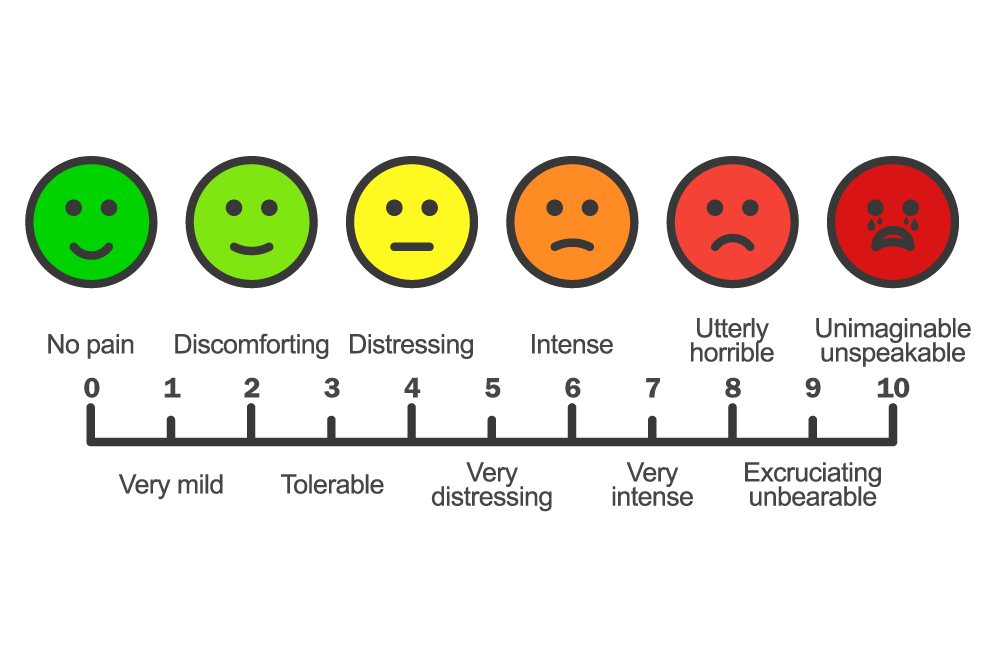Technical content marketing is hard, and it can hurt — perhaps badly enough that you’ve given up on executing your technical content marketing strategy.
Listen: “no pain, no gain” is for exercise, not content marketing. Technical content marketing doesn’t have to hurt to be effective. Check out the six pain points decreasing your technical content marketing ROI, and learn how to get your content marketing strategy working, without hurting.
What Pain Points Do to Your ROI
Savvy content marketers have a handle on their costs and more than a clue about the benefits. Excluding the cost of putting together a strategy, curation, and managing the content production process, high-quality technical content can cost anywhere from $500 to $3000 per piece, and it can be more if it includes in-depth research or development time, original graphics, and innovative design. Rarely examined, however, are how well content marketing solutions address the pain points. Why does that matter? Well, besides making your job harder, pain points increase the cost and reduce the effectiveness of your content marketing campaigns. In fact, what you feel as pain points are factors that can reduce your ROI. Let’s examine a few common pain points and how they impact content marketing ROI.
Managing Internal Content Contributors on a Consistent, Ongoing Basis
Your writers don’t report to you. Product engineers need to satisfy sales enablement before marketing. Ouch. Yet, you still have to manage this process.
ROI Impact. Time is money. The time you spend per piece of content generated, whether it is writing or wrangling, costs your company money. And it doesn’t feel great for you, either. Additionally, not having a reliable stream of content means you can’t achieve content marketing best practices, like publishing your blog posts twice a week. Basically, you take whatever revenue you think you can achieve with your content and divide by a larger number. How much larger? Our customers estimate they can spend at least 10% to 15% more time (an hour a day or more) managing content creation internally than they originally planned. Freelancers can help, but it is still a management burden.
Timely and On-Time Delivery
Trust me, these are two different things. Timely delivery is content that is created that is relevant to a particular issue of interest to the industry right when it is most interesting. On-time delivery is exactly what it says. Delivered on-time. Meets the deadline. In-house technical content writers often get pulled to support other business needs (revenue generating activities like product development or sales enablement) rather than marketing deadlines.
ROI Impact. To maximize your ROI, content must be both on-time and timely. Otherwise, you lose top-line benefits because of a lost opportunity to strike while a tech topic is hot. Not to mention you lose credibility, brand authority, and audience attention by missing the boat or not having new and interesting tech content at a predictable cadence. Ignoring this pain point can decrease top-line revenue/benefits and increase your costs.
Technical Topic Curation
Both product engineers and your marketing team may lack either the customer empathy or the technical expertise to do this effectively for your audience.
ROI Impact. You always want to reduce the amount of time you spend on a topic you can only hope to write about inadequately. It makes you feel ineffectual, and it decreases your ROI. Picking irrelevant or uninteresting topics also threatens your relationship with your audience and can decrease your brand authority, essentially decreasing any potential revenue benefit. If left unaddressed, you can only plan to watch your campaign benefits and ROI decrease over time.
Endless Loop Editing
Internal processes can run amuck. Often too many people have to touch the content, partly because of past bad experiences where content was not technically correct and low quality. Sometimes, internal editing practices are less legitimate — maybe you are stuck with a gatekeeper that won’t let content out unless it has a voice or style no one can seem to produce. Often times, this process can destroy high-quality freelancer technical content, or even worse, lead you to lose relationships with frustrated freelancers.
ROI Impact. Well, content that doesn’t get published still costs money, and it doesn’t generate any top-line benefit. So, zero divided by any number gets you…an ROI of zero.
Finding And Managing Freelancers With the Right Expertise
You’ve got the solution! Freelancers! Technical writers who can code and write. Yess!!!
Except…
Except finding freelancers who can create technical content is difficult. Freelancers can’t fake technical knowledge and get away with it. Technical content must be written by technical people. Peer-to-peer content is what wins a technical audience over.
Except you still have to identify them, recruit them, and manage them. The relationship may be cleaner as they effectively report to you, unless…
- They have a full-time job, and this is just their side gig.
- They have another customer who offers them more money to prioritize a project that’s NOT YOURS.
- They are busy on another project, but they are happy to help you later…
- Etc.
Even if you have managed to build an amazing freelance team, it’s likely you are still subject to the vagaries of endless loop editing. And should you feel like you’ve got that covered, well, that’s only because YOU are still managing it.
ROI Impact. You may be able to generate the quality of content you want, but the timeliness and other aspects of the content production process still pivot on the time you spend managing your freelance writing team. It may be as much or more effort than managing your in-house content creation. The reality is you probably have to spend time managing both in-house and freelance content creation. That means the cost is going up, and ROI is going down.
In-House Generated Content Lacks Technical Credibility
Sure, if your in-house engineer is answering a technical FAQ about your product, she may have credibility. But let’s face it, to a highly skeptical technical audience, your technical marketing materials are received as a product pitch. Even with all the cost and effort you put into that content, that content is still less effective than content written by a developer or technical practitioner outside your organization.ROI Impact. All the costs, with a reduced benefit due to the lack of credibility. ROI decrease.
There Is a Solution
It’s called Practitioner Content Marketing as a Service. It takes the pain out of every pain point and puts the gain back into your ROI. Companies like ContentLab.io take on the responsibility of recruiting technical experts — practitioners — to write authentic, high-quality technical content. ContentLab.io has the technical expertise to curate topics. And they manage the entire content creation process, including editing.ROI Impact. Your costs go down, your frustration decreases, and the effectiveness of your content marketing campaigns increase. Reliable, timely, on-time, credible content without the worry, hassle, and high internal cost. Your pain points go away, while your ROI increases.
That’s a Wrap
Creating quality, persuasive technical content for a skeptical technical audience can be a challenge. Turn to a Practitioner Content Marketing as a Service company like ContentLab.io to take the pain out of the process and put the gain back into your content marketing ROI.



